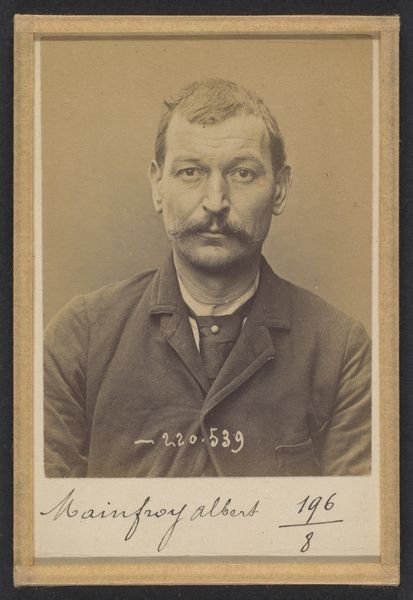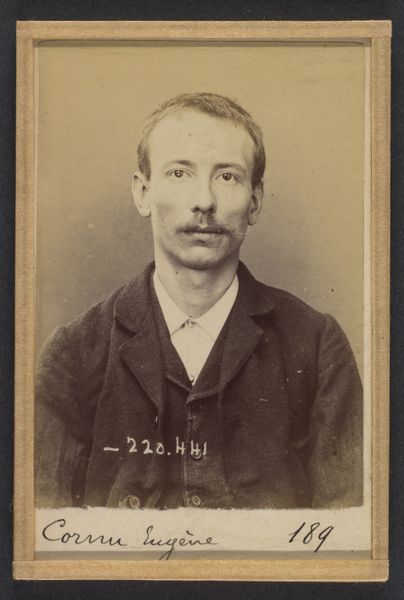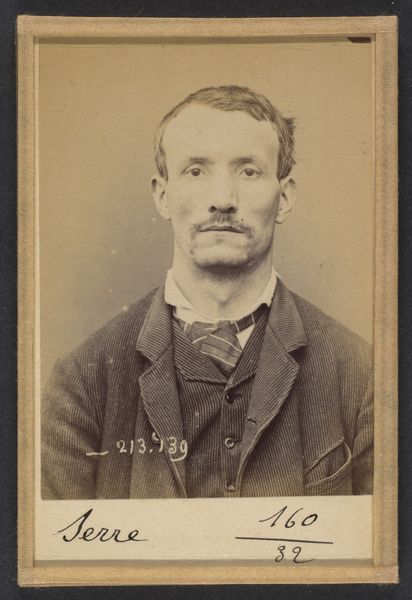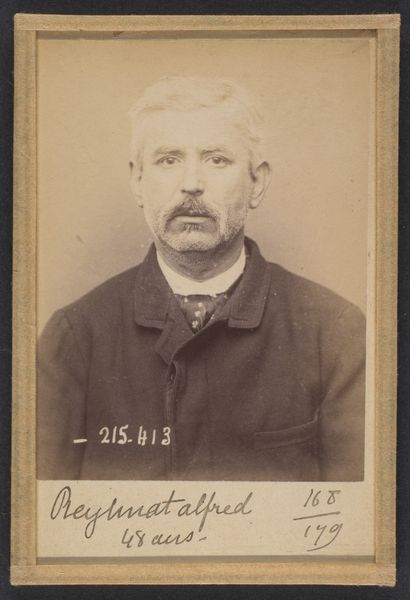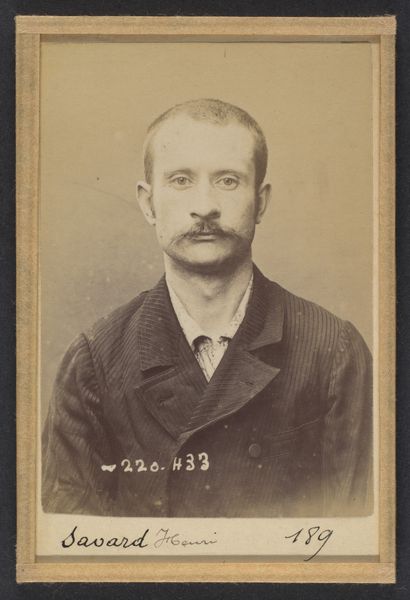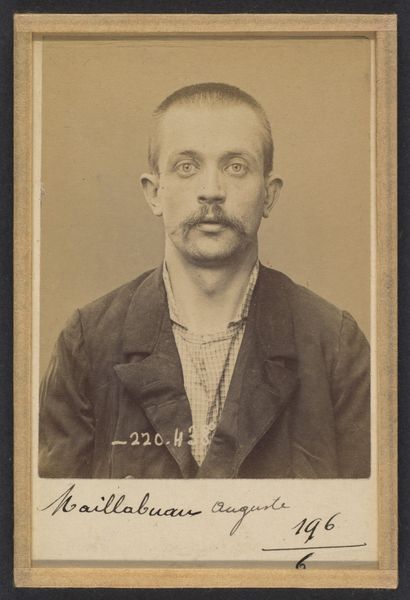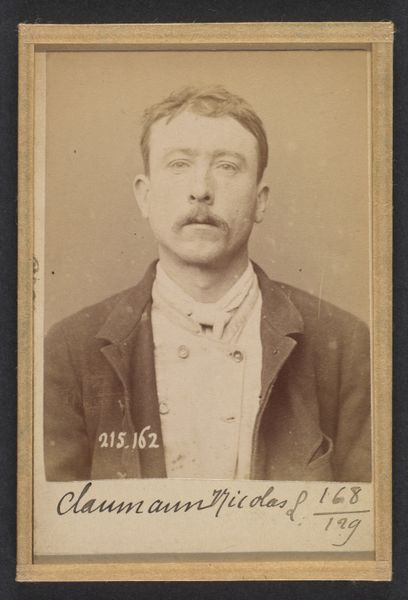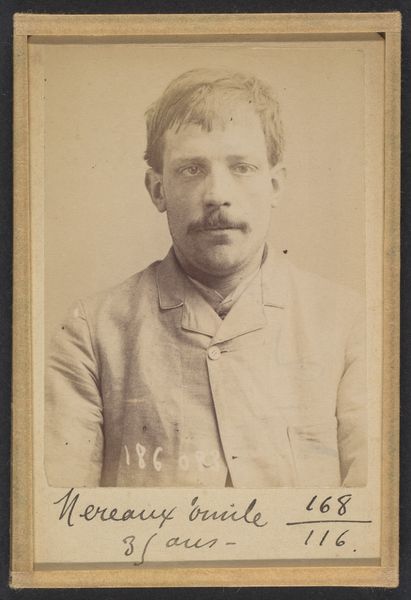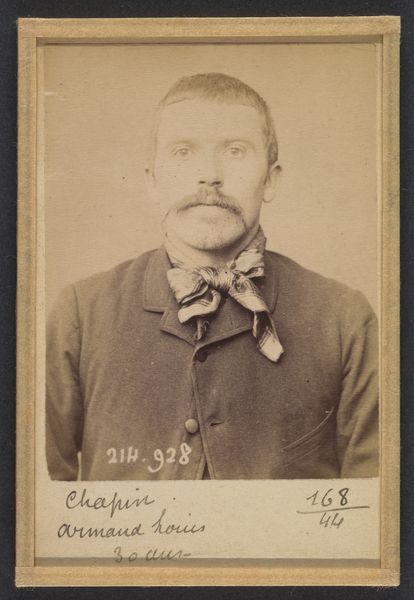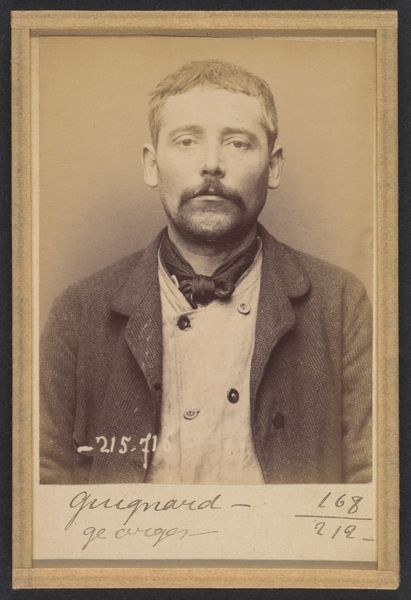
Schwartz. Auguste. 31 ans, né à Paris Xlle le 23/1/63. Maroquinier. Anarchiste. 2/7/94. 1894
0:00
0:00
photography, gelatin-silver-print
#
portrait
#
portrait
#
photography
#
gelatin-silver-print
#
history-painting
#
realism
#
poster
Dimensions: 10.5 x 7 x 0.5 cm (4 1/8 x 2 3/4 x 3/16 in.) each
Copyright: Public Domain
Editor: Here we have Alphonse Bertillon’s gelatin-silver print, “Schwartz. Auguste. 31 ans, né à Paris Xlle le 23/1/63. Maroquinier. Anarchiste. 2/7/94.” from 1894. The details inscribed within the photograph almost resemble a caption. The subject’s averted gaze and somewhat disheveled appearance give off a melancholic mood. What social narrative do you believe Bertillon is creating here? Curator: This image isn’t simply a melancholic portrait, it’s a potent symbol of the late 19th-century anxieties surrounding social order and the control of marginalized populations. Bertillon was the father of the modern mugshot and the "scientific" management of deviancy, meaning it was conceived as part of a system of control, not artistic expression. It attempts to classify, contain, and ultimately, erase the individual identity of Auguste Schwartz by labeling him as an anarchist and a criminal "type". Editor: So you're saying the photograph itself becomes a tool of oppression? Curator: Precisely! Consider the historical context: the rise of anarchist movements in France, the fear of social upheaval, and the state's response through increased surveillance. Bertillon’s photographic “evidence” became part of the effort to create an “objective” record, that in fact perpetuated systemic bias. Look at how Schwartz's body is presented: it’s stripped bare of dignity. This photo normalizes the act of watching and judging, disempowering people under its authority. Editor: So, seeing this image as just a historical portrait, we risk ignoring its darker, ideological underpinnings? Curator: Exactly. It is a product of—and contributes to—a system where power imbalances are not only maintained but also presented as neutral observations. The question we need to consider is whether documentary photography can ever be truly neutral, or if it inherently carries the biases and power dynamics of its creators. Editor: I never thought about it that way. I appreciate learning how what seems like just a documentary picture actually had a powerful societal intent and bias behind it.
Comments
No comments
Be the first to comment and join the conversation on the ultimate creative platform.
